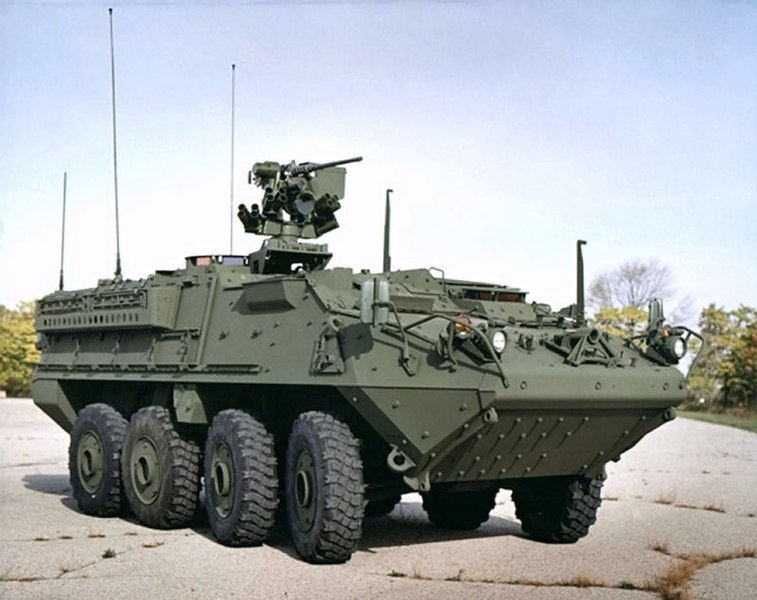
Posted on 09/10/2009 5:44:14 AM PDT by Homer_J_Simpson




















"Sd.Kfz 231-2 / 8-Rad:"The term Schwerer Panzerspähwagen (Heavy armored reconnaissance vehicle), covers the 6 and 8 wheeled armoured cars Germany used during the Second World War.
"In the German Army, armoured cars were intended for the traditional cavalry missions of reconnaissance and screening. They scouted ahead of mechanized units to assess enemy strength and location. Their primary role was to observe rather than fight enemy units, although they were expected to fight enemy reconnaissance elements when required."
"Loosely based on the hull of the Sd.Kfz 231/6-Rad vehicle. The hull was modified to swap the main driver & reverse driver/radio operator positions in order to place the engine at the rear and the 3 axle truck chassis replaced with a pair of 2 axle 4 wheel trucks, for an eight-wheeled, all wheel drive, all wheel steering chassis to improve off road capabilities and maneuverability."

A mean motor scooter... ;-)
The Panzerspähwagen Sd.Kfz. 231/4 ran up to 12 tons, crew of 4. Don't know a modern US military exact equivalent -- but you might consider one of these: ;-)

The German one looked more maneuverable- looked like at least 3 sets of wheels turned, instead of just the front 2 sets. And don’t try to wish a Russian BTR off on me.
Yes very mean. Kind of ugly though.
According to Wiki, all four axles steered, so must have been pretty good in a tight spot.
Over the years I've sometimes read discussions about the lack of a pure "scout" vehicle in the US military -- Jeeps & Hummers too small & soft, Bradley's & Strykers too big.
These German Panzerspähwagen Sd.Kfz.'s might be a mid-sized "just right" solution, but even they had limitations:
"These vehicles first saw combat with the campaign against Poland and in the Battle of France. The radio communication cars proved their ability in infantry support, especially during street fighting.I don't really agree with critics of US "scout" vehicles, because, first and foremost, you have to consider exactly what missions they get used for. In combat, no vehicle ever goes anywhere "by itself." It's always a team effort, with backup and supporting vehicles on-call. So, whatever vehicles you send out on the ground, there may, for examples, be Blackhawks and/or Preditors watching from overhead. What matters is more teamwork than individual capabilities. Imho, of course..."Later they saw use in both the USSR and North Africa. Extreme climatic conditions in both these areas proved too severe for the vehicle. In the USSR, adverse ground conditions immobilized 150 Sd.Kfz 232s during the first wet season of the campaign. In the desert, heat and sand created some maintenance problems.
"Still, the eight-wheeled cars turned out to be the best vehicles that Rommel had for long range reconnaissance across the wide desert territory."
Found it! I knew I'd seen these somewhere before. Here's what you want:

US M8 Greyhound Light Armored Car:
"First seeing service in 1943, the six-wheeled M8 was the only armored car to be used in combat by the US Army in WWII. The M8, or Greyhound, as it was often known by the Commonwealth, was widely used for reconnaissance in the fighting in Southern and Western Europe. After the war the M8 saw service in Korea and Indo-China, and was supplied to a diverse range of nations."
"A total of 8,523 units were built, not including the M20 Armored Utility Car."
"The vehicle was widely exported and as of 2006 still remains in service in some third world countries."
Of course, I can't tell you the price, used in good condition... ;-)
cool. They sure built a lot of them back in WW2 didn’t they?
Looks like they run about $70,000 or so restored. Looks like I’d be small enough to easily fit in the driver’s compartment. If I win the lottery, I think it is worth consideration. They are supposed to be good on-road, iffier in rough country.
Disclaimer: Opinions posted on Free Republic are those of the individual posters and do not necessarily represent the opinion of Free Republic or its management. All materials posted herein are protected by copyright law and the exemption for fair use of copyrighted works.